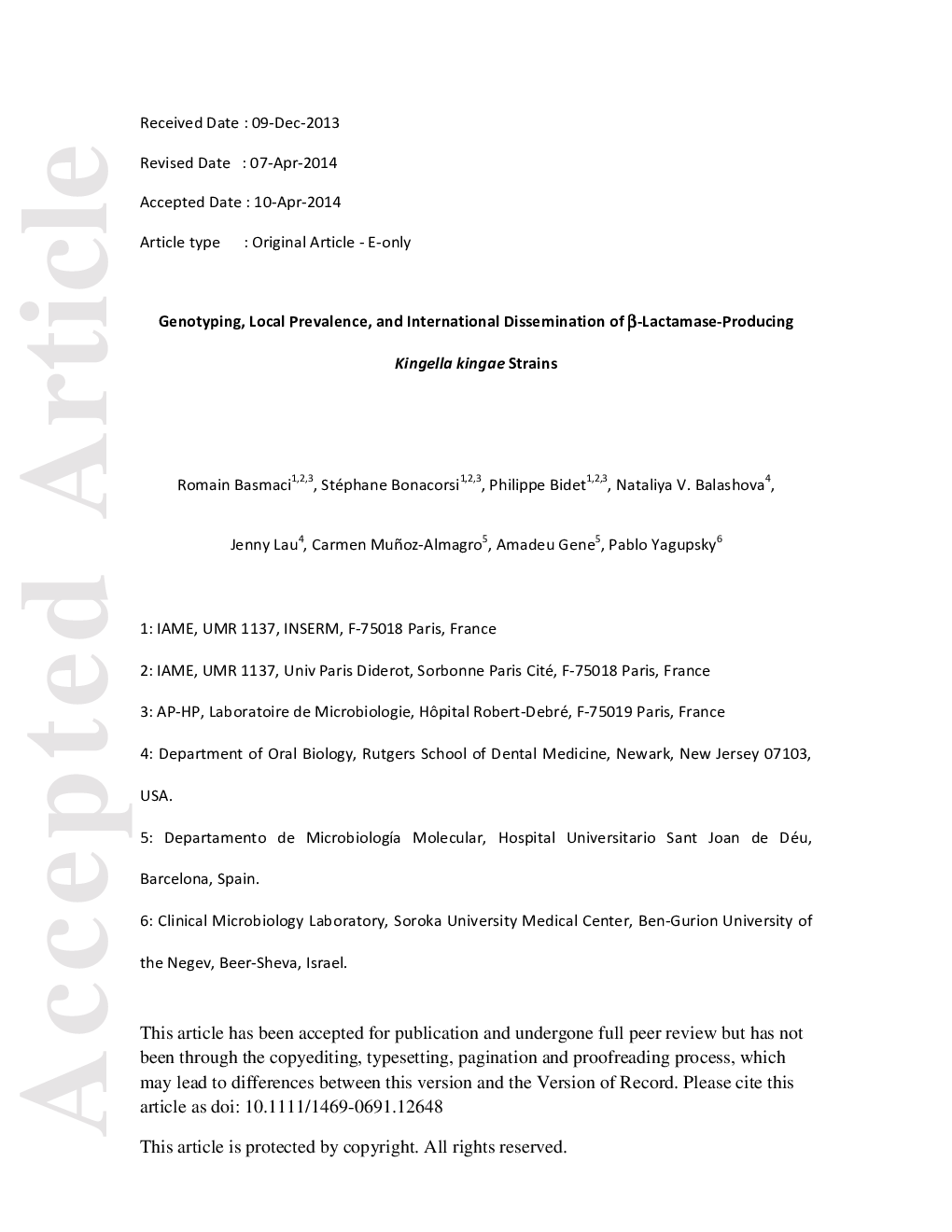| Article ID | Journal | Published Year | Pages | File Type |
|---|---|---|---|---|
| 6130029 | Clinical Microbiology and Infection | 2014 | 23 Pages |
Abstract
β-lactamase production has been sporadically reported in the emerging Kingella kingae pathogen but the phenomenon has not been studied in-depth. We investigated the prevalence of β-lactamase production among K. kingae isolates from different geographical origins and genetically characterized β-lactamase-producing strains. Seven hundred and seventy-eight isolates from Iceland, the USA, France, Israel, Spain and Canada were screened for β-lactamase production and, if positive, were characterized by PFGE and MLST genotyping, as well as rtxA, por, blaTEM and 16S rRNA sequencing. β-lactamase was identified in invasive strains from Iceland (n = 4/14, 28.6%), the USA (n = 3/15, 20.0%) and Israel (n = 2/190, 1.1%) and in carriage strains in the USA (n = 5/17, 29.4%) and Israel (n = 66/429, 15.4%). No French, Spanish or Canadian isolates were β-lactamase producers. Among β-lactamase producers, a perfect congruency between the different typing methods was observed. Surprisingly, all US and Icelandic β-lactamase-producing isolates were almost indistinguishable, belonged to the major international invasive PFGE clone K/MLST ST-6, but differed from the four genetically unrelated Israeli β-lactamase-producing clones. Representative strains of different genotypes produced the TEM-1 enzyme. K. kingae β-lactamase producers exhibit a clear clonal distribution and have dissimilar invasive potential. The presence of the enzyme in isolates belonging to the major worldwide invasive clone K/ST-6 highlights the possible spread of β-lactam resistance, and emphasizes the importance of routine testing of all K. kingae clinical isolates for β-lactamase production.
Related Topics
Life Sciences
Immunology and Microbiology
Microbiology
Authors
R. Basmaci, S. Bonacorsi, P. Bidet, N.V. Balashova, J. Lau, C. Muñoz-Almagro, A. Gene, P. Yagupsky,
